.webp)

Bee Removal in Diboll, TX
Bee removal in Diboll, TX by Spot On Pest Control, LLC. Humane hive relocation, safety measures, and prevention steps—schedule safe removal service today.

Bee Removal in Diboll, TX
Bee infestations create immediate safety concerns, potential property damage, and stress for homeowners. In Diboll, TX, where backyard trees, humid summers, and nearby rural acreage increase encounters with pollinators and stinging insects, understanding humane removal, safety protocols, and when structural remediation is needed is essential. This page explains how professional bee removal in Diboll, TX works, how nests are identified, the difference between relocation and extermination, and practical guidance for households with allergies.
Common bee and stinging insect species in Diboll, TX
- Honeybees: Social, form large colonies and combs. Valuable pollinators and often relocated when possible. Can establish in wall voids, attics, or hollow trees.
- Bumblebees: Less aggressive, nest in ground or cavities. Colonies are seasonal and smaller than honeybee hives.
- Carpenter bees: Solitary wood-boring bees that create round holes in untreated wood, decks, and eaves. They cause structural wood damage over time.
- Yellowjackets and paper wasps: Aggressive, often nest in ground, soffits, attics, or shrubs. Usually treated as stinging-insect hazards rather than candidates for relocation.
- Hornets (including bald-faced hornets): Build paper-like aerial nests and can be aggressive if disturbed.
Knowing the species is the first step to a safe, effective solution. Keywords like bee nest removal Diboll and humane bee relocation Diboll matter because different insects require different approaches.
.webp)
Typical nesting locations and common issues in Diboll homes
- Attics and wall voids: honeybees and yellowjackets can build extensive combs hidden inside structures.
- Soffits, eaves, and porch beams: carpenter bees bore into wood; paper wasps build nests in protected overhangs.
- Trees, shrubs, and fence posts: natural nesting sites for many species.
- Agricultural structures and outbuildings: offers easy shelter and less human disturbance.
Local climate factors in East Texas—hot, humid summers and abundant flowering plants—encourage larger colonies and extended active seasons. Peak activity runs from spring through early fall, with swarming events often seen in late spring.
How professionals diagnose bee problems
A trained technician will:
- Conduct a visual inspection around the exterior and accessible interior spaces to locate entry points and visible combs.
- Identify the species by behavior, nest structure, and, where possible, sample observation.
- Assess colony size and activity level to determine urgency.
- Map the affected areas and check for secondary damage such as honey stains, moisture, or beetle infestations.
- Recommend relocation or removal options, and note potential structural remediation needs.
Homeowners should avoid DIY probing or sealing entry points before inspection, as this can trap insects inside walls and increase damage or risk.
Humane relocation vs extermination: what to expect
- Humane relocation is the preferred option for honeybees whenever feasible. Professionals capture the colony, secure the queen, and place bees into transportable boxes for transfer to a beekeeper or sanctuary. Relocation preserves pollinators and avoids pesticides.
- Extermination is sometimes necessary for aggressive species (yellowjackets, certain wasps), large infestations posing immediate public safety risks, or when local regulations or site constraints prevent safe relocation.
- For carpenter bees, a mixed approach is typical: remove and repair damaged wood, treat for remaining bees, and employ deterrents to prevent re-infestation.
- Local considerations: many East Texas communities encourage conservation of honeybees. Connecting with regional beekeeper networks often enables safe relocation.
Relocation requires planning and, in some cases, coordination with local beekeepers. Extermination focuses on safety and containment.
Safety protocols for stinging insects
- Technicians use appropriate PPE including bee suits, veils, gloves, and respirators when pesticides are applied.
- Methods minimize risk to people and pets: work is frequently performed at low-light times (dawn or dusk) when bees are less active, and containment measures are used to prevent escape.
- For honeybees, smoke or specialized bee vacuums reduce aggressive behavior during capture.
- Chemical treatments, when required, are targeted and used only when relocation is not safe or possible.
- Professionals also advise neighbors and establish perimeters to keep bystanders at a safe distance during removal.
These protocols reduce the chance of stings, colony disturbance, and accidental spreading of bees into other structures.
Structural remediation after bee removal
Bees and wasps can leave behind comb, honey, propolis, and nesting materials that cause long-term damage and attract secondary pests such as ants, beetles, and rodents. Typical remediation steps include:
- Complete removal of comb and contaminated insulation or materials.
- Drying and deodorizing the space to remove honey residues that retain moisture.
- Mold inspection and remediation if moisture has caused fungal growth.
- Replacement of insulation, drywall, or wood where contamination or rot is present.
- Carpenter bee damage repair: remove and replace rotten wood, fill and seal holes, and treat wood to prevent recurrence.
- Sealing and screening of entry points to prevent reinfestation, including trimming vegetation and repairing soffits or vents.
Prompt remediation reduces structural risks and prevents additional infestations. In humid climates like Diboll, untreated honey and moisture can accelerate mold growth and wood rot, so timely cleanup is especially important.
Advice for homeowners with allergies
- If someone is stung and experiences difficulty breathing, swelling of the face or throat, dizziness, or fainting, treat as a medical emergency and seek immediate help. Use epinephrine (EpiPen) if prescribed, then seek emergency medical care.
- Consider allergy testing and immunotherapy if you live in an area with recurring bee activity.
- Avoid DIY nest removal if anyone on the property has a known allergy. Even a single sting can be life threatening.
- Keep windows and screens in good repair, store food and trash securely, and minimize open sugary drinks when outdoor activity attracts insects.
What to expect during and after service
A professional bee removal process typically includes a clear inspection, species identification, an explanation of options (relocation or removal), targeted implementation using safety protocols, and follow-up checks. After removal, expect recommendations for structural cleanup, repairs, and prevention measures suited to Diboll homes and climate. Preventive actions often include sealing entry points, replacing damaged wood, and adjusting landscaping to reduce nest-friendly conditions near living spaces.
Bee removal in Diboll, TX requires a balance of safety, protection of pollinators when possible, and thoughtful structural care. By understanding species behavior, professional protocols, and necessary remediation, homeowners can make informed decisions that protect families and property while supporting local environmental health.
Safe & Efficient Bee Removal in Diboll, TX That Respects Nature
Bees belong in nature—not in your home or yard. Our humane bee removal in Diboll, TX protects your family while respecting the environment. Spot On Pest Control, LLC handles every nest with care, providing seasonal protection to avoid repeat invasions. Book safe removal today.
Remove Bees Safely With Expert Local Care
Our Services
Our pest control services cover ants, termites, bed bugs, rodents, mosquitoes, and other common pests, with customized solutions for both residential and commercial properties.
.png)






